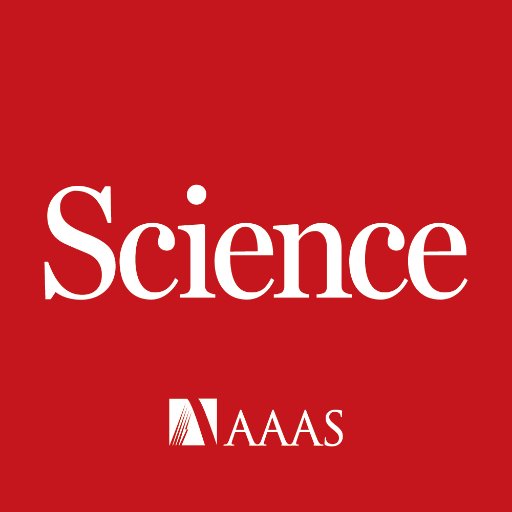
CapSciNY
@CapSciNY
Followers
236
Following
158
Media
232
Statuses
635
Promoting Science in the Capital Region - Science is for Everyone.
Albany, NY
Joined February 2018
Happy #WorldTurtleDay! Be on the lookout for turtles crossing the road and remember to "give turtles a brake." Thousands of turtles are killed each year in New York when struck by vehicles while migrating to nesting areas. 🧵⤵️ 📷: Laura Heady
3
37
98
Just one of many cool stories we've seen for #WorldBeeDay
Lab-kept bumble bees roll small wooden balls around for no apparent purpose other than fun, revealed a study from last year. Learn more on #WorldBeeDay: https://t.co/MnJvQmvse8
@ScienceVisuals
0
0
1
What is love? A) Oh baby don't hurt me B) Oxytocin C) I don't know It's a mystery scientists have yet to explain, but that hasn't stopped them from trying. https://t.co/jz7g9umLvO
vox.com
People say they know what they’re looking for in a partner. Relationship experts say otherwise.
0
0
1
You may be familiar with the plight of the honeybee but what about bumblebees? The decline of these bees, native to the U.S., gets less conservation attention, but they're unsung heroes of pollination.
0
0
1
Frogs, each with an amputated limb, regrew their lost legs in a regenerative medicine experiment. After just 24 hrs of exposure to the treatment, the limbs successfully regrew over the next 18 months.
amp.theguardian.com
Nearly complete limb develops over 18 months, raising exciting possibilities for human patients
0
0
2
It’s #penguinawarenessday and a fine time to look at the role of these animals in science. The website of the US’s Antarctic Program features a live webcam showing the Torgersen Island penguin colony.
0
0
1
Elizabeth Ann may save an endangered species, the black-footed ferret. Why is Ellizabeth Ann invested in saving ferrets? Because she is a black-footed ferret, a clone who scientists hope will help boost genetic diversity in the dwindling population
0
0
0
In a first for, well, the world, NASA announced that the Parker Solar Probe penetrated the sun's outer atmosphere, on April 28. No spacecraft has ever gotten so close to the sun.
nature.com
Nature - The Parker Solar Probe has passed through a boundary and into the Sun’s atmosphere, gathering data that will help scientists better understand stars.
0
0
1
Which chemical discoveries will take home the title of the coolest molecule of the year? Vote at Chemical and Engineering News! A personal favorite - infinitene, made of benzene rings that loop like an infinity ring.
cen.acs.org
With researchers back in the swing of things, we review the year’s top trends, fascinating findings, memorable molecules, and more
0
0
1
Earlier this week, scientists reported they found the second person naturally cured (meaning without the help of medicines or therapies) of HIV, the virus causing AIDS.
statnews.com
The “Esperanza Patient” appears to have eradicated the virus from her body without the help of drugs or a bone marrow transplant — which would make her only the second person believed to have cured...
0
0
1
Catch up on COP 26, the big climate change summit, and read about the science, projections, and promises featured at the meeting.
0
0
1
Want to know what it's like to be on Mars? Read about the experiments (on Earth) recreating conditions humans may face on Mars. https://t.co/9Meooqh9FQ
smithsonianmag.com
A hostile landscape. Cramped quarters. Dehydrated food. A photographer takes part in an attempt to live on another planet
0
0
1
In a recent test to tackle the organ shortage, scientists attached a kidney from a gene-edited pig to a deceased patient. In it's 2-day stint, the pig organ functioned just like a typical kidney. https://t.co/trVSLDGkcq
apnews.com
Scientists have temporarily attached a pig’s kidney to a human body and watched it begin to work. The feat is a small step in the decades-long quest to one day use animal organs for life-saving...
0
0
0
Checkout footage from NOAA's uncrewed surface vehicle from inside a category 4 hurricane, featuring 50-foot waves and 120 mph winds.
noaa.gov
NOAA and Saildrone are collecting scientific data from inside Hurricane Sam
0
0
1
Wow! What an impressive lineup! Looking forward to tuning in for these events!
Excited to officially announce the "Stranded in Science" #SciComm #SciArt virtual seminar series! We have spectacular speakers @CranfordMATTER @MichelleFrancl @KitchenChemProf for this first edition. More details on each event to follow. 💻📡🔗 @TheRNAInstitute @UAlbanyLSRB
0
2
1
Scientists found fossilized footprints showing humans came to North America thousands of years before most people thought. "If the dating is accurate...the prints represent the earliest unequivocal evidence of human occupation anywhere in the Americas."
nature.com
Nature - Children left tracks in New Mexico around 22,500 years ago — thousands of years before most scientists thought humans settled in North America.
0
0
0
Scientists are diving into Lake Superior, exploring the Lucerne shipwreck. They're looking for sponges. These sponges could hold molecular secrets to new antibiotics.
statnews.com
Chemist Brian Murphy is among those dedicated to pairing old-fashioned exploration with 21st-century technology to find new antibiotics and fill the "discovery void" in the field.
0
0
1
9/8, researchers announced the completion of a coral atlas made from over 2 million satellite images of the world's coral reefs. It's the first high-res global map of corals, and has a bleaching monitor. You can explore it here: https://t.co/SdcwuoIv3f
#scicomm #climatechange
0
1
4
When they subjected a soccer ball-like cage of 60 carbon atoms, aka buckyball, to high pressure and temperature (1,200 degrees C or 2,192 degrees F), scientists created a material so hard it scratches diamonds. https://t.co/oqACQxUt19
chemistryworld.com
Compressing buckyballs at high temperatures makes ultra-hard and strong carbon materials
0
0
0
Vaccines aren't just for people and pets. Scientists are developing - and in some cases have developed - vaccines to protect a wide array of wild animals: prairie dogs, white-nosed bats, yellow-eyed penguins, koalas, and even Siberian tigers. https://t.co/EquLOxqJJD Read less
news.mongabay.com
For more than a year, the world has closely followed the development, approval and deployment of various coronavirus vaccines that could bring an end to the global pandemic, debating every side...
0
0
0














